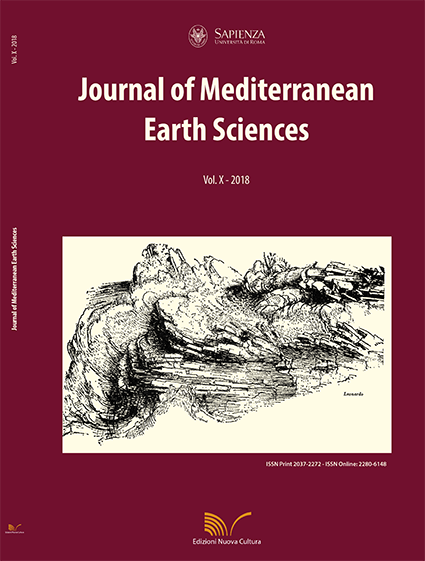Preliminary laboratory characterization of serpentinite rocks from Calabria (southern Italy) employed as stone material
DOI:
https://doi.org/10.3304/JMES.2018.017Keywords:
Serpentinite, physical-mechanical properties, petrophysics, historical quarries, Natural Occurring Asbestos, Calabria (Italy)Abstract
Serpentinite rocks are employed and traded as building and ornamental stones as well as for decorative jewels worldwide. In Calabria (southern Italy), extensive ophiolite outcrops made of serpentinite and metabasite rocks allowed serpentinite exploitation and marketing since prehistorical times. For this reason, we chose some serpentinite –key outcrops, such as those ones located at quarries and road cut in the area of Sila Piccola (northern Calabria) to collect representative samples for specific laboratory analyses.
The petrographic features of the serpentinite rock samples have been then investigated in detail by means of Polarized Light Microscopy (PLM), X-ray powder diffractometry (XRPD), Scanning Electron Microscopy combined with Energy-Dispersive Spectrometry (SEM/EDS). Moreover, some tests have been carried out on serpentinite specimens in order to establish their physical-mechanic properties such as the Uniaxial Compressive Strength (UCS), porosity and seismic behavior, before and after cycles of salt crystallization tests. This work aims to study serpentinites from Gimigliano and Conflenti quarry Calabria region (Italy) with an attempt to shed light on the variation of main physical-mechanical and petrophysical properties that occur after these rocks undergo ageing tests, in order to predict their behavior in monuments. Results showed that microfractures play a key-role in affecting the whole behavior of these rock, since the combined action of filling by salt and expansion implicate weaker behavior under the physical-mechanical point of view.
Downloads
Published
How to Cite
Issue
Section
License
The submission has not been previously published, nor is it before another journal for consideration (or an explanation has been provided in Comments to the Editor).


